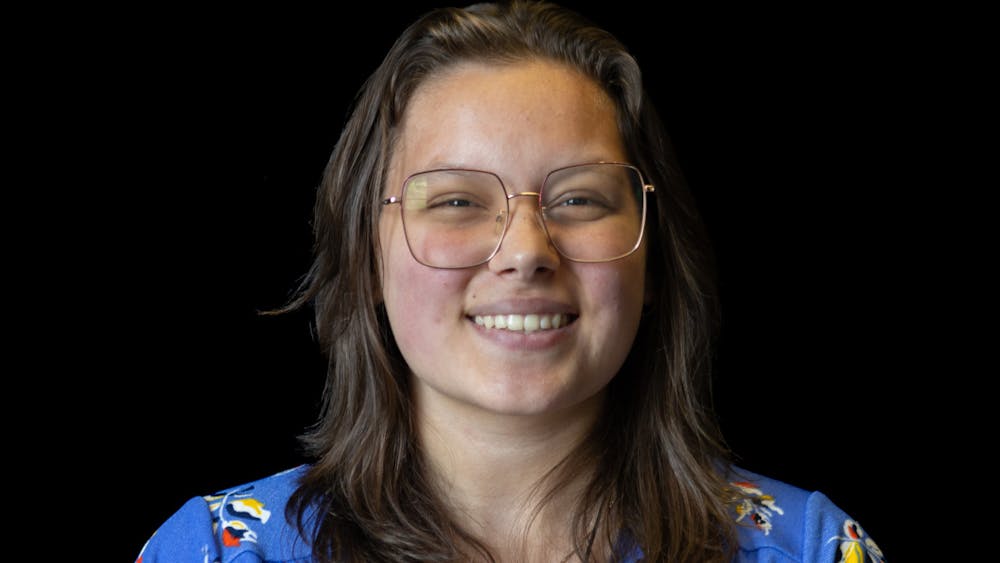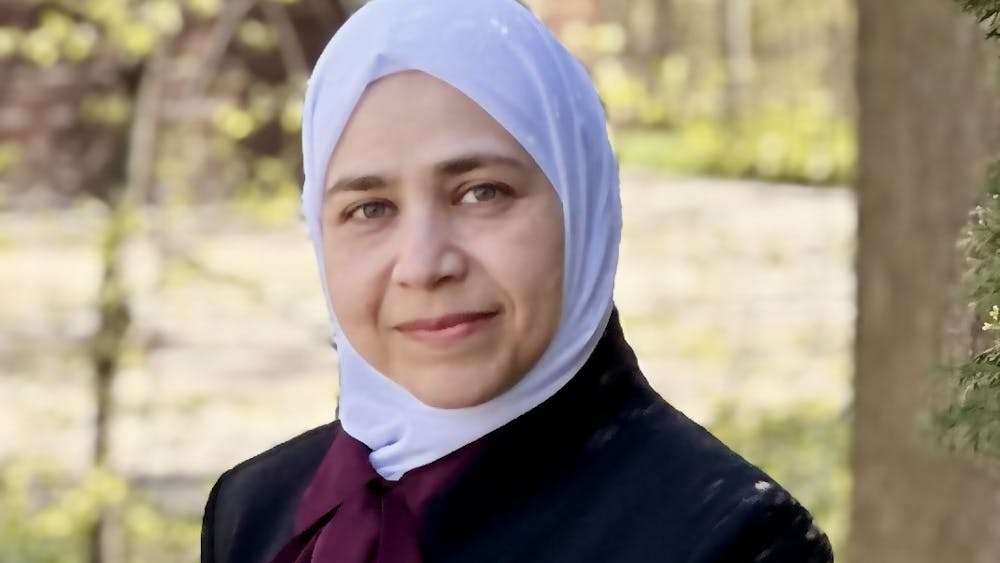From Idea to Incorporation: CMURC helps students expand businesses, products
When Grand Rapids senior Dylan Banagis participated in the 2016 New Venture Competition he launched Unplugged Outfitters, a clothing line with a greater purpose than just selling T-shirts and activewear.
At the end of the competition, Banagis’ idea ranked second in three different categories. He was happy with his performance in the business competition, but the entrepreneurship major didn’t win the funding needed to develop his business.
As the fifth-year senior began preparing for this year’s New Venture Competition, Banagis turned to the Central Michigan University Research Corporation for help.
Located at 2625 Denison Drive in one of the least-traveled corners of campus, the unassuming brick building is home to the CMURC. The organization was created in 1999 as part of an initiative of the Michigan Economic Development Corporation. The MEDC helped establish 10 incubator locations across the state in 2001.
The non-profit CMURC, which is governed by a board of directors that includes representatives from Central Michigan University, helps support economic development in the Great Lakes Bay Region community by leveraging the resources of its members, the university, the Mount Pleasant SmartZone and local, regional and state partners.
CMURC offers hands-on expertise that includes
- Industry, market and feasibility analysis
- Business strategy and implementation, including product, manufacturing and supply chain development
- Investment relations and partnerships
Erin Strang, the president and CEO of CMURC, believes Mount Pleasant is a community full of entrepreneurs. Harnessing the community’s potential will benefit Michigan as a whole, she said, especially as the CMURC moves forward with plans to expand its influence throughout Central Michigan.
“When we’re working with entrepreneurs who are looking to make their own path, it’s a lot easier for us to connect with people who like to give back and share their knowledge and information with those up-and-coming (business people),” Strang said. “I think people helping other people in this community has been the reason the programs we’ve developed have really been successful for all parties.”
Banagis, who was aided by faculty member Jordan Bruursema, wanted to create a product line that promoted “living life to the fullest” by living a healthy lifestyle and unplugging from technology. He took Unplugged Outfitters to CMURC where Strang and her staff helped hone his concept into something that could become a financially viable business.
“They helped us out a lot with things that Jordan and I might have overlooked before,” he said. “Stuff like trademarks, accounting and operating agreements — they really helped us a lot with the background stuff that not everybody knows about, but really needs to be done to have successful business.”
Banagis' idea was just one of hundreds of raw business ventures and companies the CMURC has helped evolve since 1999.
Success in the SmartZone
CMURC is a business incubator or accelerator. Its primary goal is to assist local entrepreneurs with advice and resources to move business or product ideas into the marketplace.
The Mount Pleasant office building on Denison Drive is a major part of Mount Pleasant’s 300-acre “SmartZone,” one of 17 in Michigan.
SmartZones were created to provide distinct areas where technology firms, entrepreneurs and researchers gather in close proximity to vital community assets — much like CMU. The business “clusters,” as CMURC staff members call them, promote collaboration between business people with industry leaders, community institutions and elected officials in local government.
New SmartZone clusters focus on things like selling and pitching commercial ideas or securing patents.
According to its 2016 financial impact report, CMURC provided its services to 249 unique companies and entrepreneurial ventures. This resulted in the creation of 41 new companies and 137 jobs. The business incubator also saw a total of $12.9 million capital raised. CMURC is signed on a five-year subsidy with the university, granting the corporation $500,000 per year. In return, CMURC maintains the facilities within the SmartZone and attracts entrepreneurs and researchers to Mount Pleasant.
“We’ve really built some scalable programs that have proven to yield pretty substantial results,” said Strang, who first joined the organization in January 2009 as director of operations. “We’ve got a good team working on those programs and services, and will continue working well into this year.”
Now, with her team at CMURC, Strang is helping create companies from the ground up, turning food trucks and phone app startups into bastions of good business.
Successful Choices
CMURC works closely with CMU. Its board of directors includes some university staff and administrators, including Barrie Wilkes, vice president of Finance and Administrative Services, who serves as the organization's treasurer.
“If you’ve got an idea, they’ll work with you as an inventor,” he said. “They work with entrepreneurs and try to help inventors, individuals and companies grow their businesses.”
Growth is an important item on the organization's 2017 agenda. This year the CMURC staff will primarily work toward three goals. The first is the continuation of the organization’s expansion into the Great Lakes Bay region, establishing two new facilities.
The new Bay City incubator, which opened March 1, takes up 5,000 square-feet of real estate in Bay City's uptown. While it has always served the Great Lakes Bay Region, the expansion to a second location in Bay City will bring the same programs and additional space directly to entrepreneurs and businesses in the Bay City area.
Strang said the location was chosen because it provides the CMURC with the best opportunity to increase the organization’s area of influence and the effectiveness to which they could serve and collaborate with other SmartZone networks in Michigan.
“Just like the (Mount Pleasant) community has its own assets and connections, those other communities do as well,” Strang said. “By adding those locations we expand the opportunities not only for entrepreneurs from Mount Pleasant, but for the entrepreneurs in these other locations as well. It also allows for those people to have more regional presence, if that is what their business denotes.”
CMURC will continue to provide programs, like Right Choice and CoWork, for entrepreneurs and small businesses from its Mount Pleasant office. The programs’ successes — and the success of its clients — means that CMURC is able to grow with its entrepreneurs and the needs of the region.
Secondly, the CMURC and its clients will need more development space to continue their mission. CMURC has 300 acres of land in its Mount Pleasant SmartZone which is ready for new development.
According to the impact report, in order to encourage SmartZone development, CMURC sets aside 50 percent of the total rent collected from the leases of all anchor tenants into a fund that is used to cover building development costs.
The third goal is to further develop what Strang calls the “university commercialization process,” taking the lead in helping CMU faculty members develop tech or product ideas. When a CMU faculty member has an idea for a new piece of tech or product that they disclose to the university, the faculty member also shares it with CMURC.
The research corporation will then analyze the existing market to determine the readiness of the technology and the potential commercial viability.
Community’s Business Mecca
Strang likes to consider the many different ways a business can be defined as successful. No matter the company’s size, the CMURC’s accelerator program is designed to help clients transform an idea into a sale as effectively as possible.
“We think there is success on all different levels,” she said. “There’s all kinds of little wins and successes throughout the incubator program to the point where you actually have something that’s tangible that can sell.”
Every business venture is unique in its own way, so CMURC bypasses the idea of a “typical" process, Strang said. For example, the Right Choice program for entrepreneurs walks them, their business or their products from ideation to the marketplace. Up to four entrepreneurs are accepted into the program each month.
Participants receive advice and guidance from CMURC. They are also able to access trusted, vetted service providers — from intellectual property attorneys to graphic designers — to protect intellectual property before it hits the market.
Each phase takes a client through a step-by-step process to help a business strategically grow.
The first phase of Right Choice is focused on forming the business idea. This phase looks at an idea on a basic level and develops the initial pitch. For Banagis, this was the shortest and easiest phase because his experiences in the New Venture Competition covered many of the same topics.
The second phase focuses more on the financial aspects of the business, including finding ways for independent entrepreneurs to develop financially sustainable goals. This is the most difficult phase for many newcomers to the system because there are often disagreements over how to best use their money.
In the case of disagreements, the CMURC's policy is to let their clients make all of the final decisions when it comes to their business.
"At the end of the day, the companies that we help are still companies," Strang said. "We've helped develop some very creative business models that may or may not have been implemented. We're just here to assist and guide and help people think through the things that they might not have known to think through before."
Banagis is in the middle of the third and final phase of development, which sees the material covered in the first two phases being polished and developed until the business is able to stand on its own. The first two phases each end with the client giving a mock pitch for their company to an audience of CMURC staff. The third phase will end with Banagis making a pitch to an investor.
Though they still work with the CMURC on a weekly basis, Banagis said his time working with the business accelerator helped his business immensely. Unplugged Outfitters recently completed its Kickstarter campaign with $4,135 — surpassing its goal of $3,000. The business also recently launched its official website.
"They're giving us access to people that we otherwise wouldn't have had access to," he said. "The Right Choice program wasn't just paperwork, it gave me access to people. People who are willing to help, give feedback and criticize your business for the better."
Banagis values the CMURC's dedication to connecting with clients on a deeper personal level. One example of this is through weekly Beer 30 get-togethers, which encourage clients to share business concerns, experiences and their favorite beers in a relaxed setting.
"We like it since we're more of a non-traditional company, so it sometimes works better if we're in a more friendly setting," he said. "Beer 30 is perfect for us because we can come to (CMURC) without it having to always be too formal or business-oriented. It really helps to have that extra level of engagement."
Students, faculty or community members interested in seeking guidance from the CMURC can visit the group’s website, cmurc.com, or email cmurc@cmurc.com.
Homegrown Entrepreneurs
Jim Holton missed his final exams of his senior year at CMU to see to the ground-breaking of his then-new restaurant. He still doesn’t regret his choice, 20 years after choosing to start his business in Mount Pleasant.
Since starting his business-chain on October 9, 1996, Holton has taken his initial restaurant — an abandoned train station-turned-steakhouse and brewery called Mountain Town Station — and expanded the brand to include a microbrewery, a fine dining restaurant called Camille’s on the River and the diner Alma Brewing Company, with plans to begin a personal catering business later this year.
Holton's brand expansion was guided by experts at CMURC. Holton enjoyed what they did so much, he began serving as a member of the CMURC board of directors three years ago.
He credits his joining of the board an example of how the CMURC has evolved its business model to foster a wider array of creativity and innovation.
“The board has changed over the last couple of years,” he said. “Before it was a lot of deans and professors. Great people, don’t get me wrong, but they’ve been electing to move a little bit more outside to the outsider influence like me.”
Holton sees the current board, which includes CMU President George Ross, as an effective mix of entrepreneurial energy and a more conservative approach to money management.
“There are some extremely intelligent people on that board,” Holton said. “Watching them, I know that the organization is in great hands. I know the financials are going to be just fine. I like the energy of it.”




